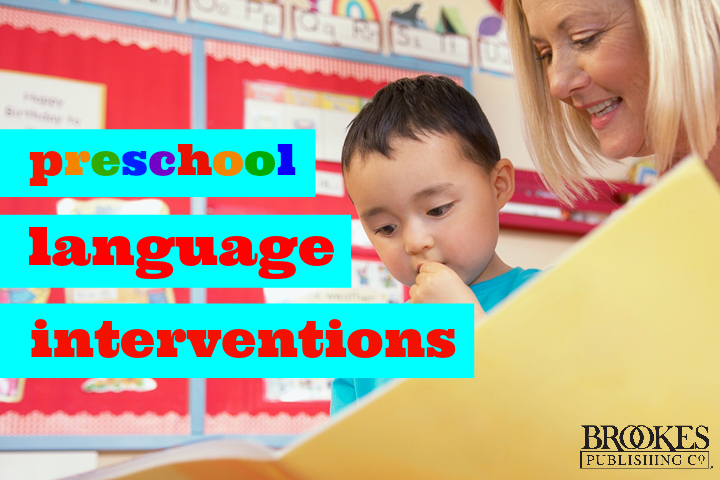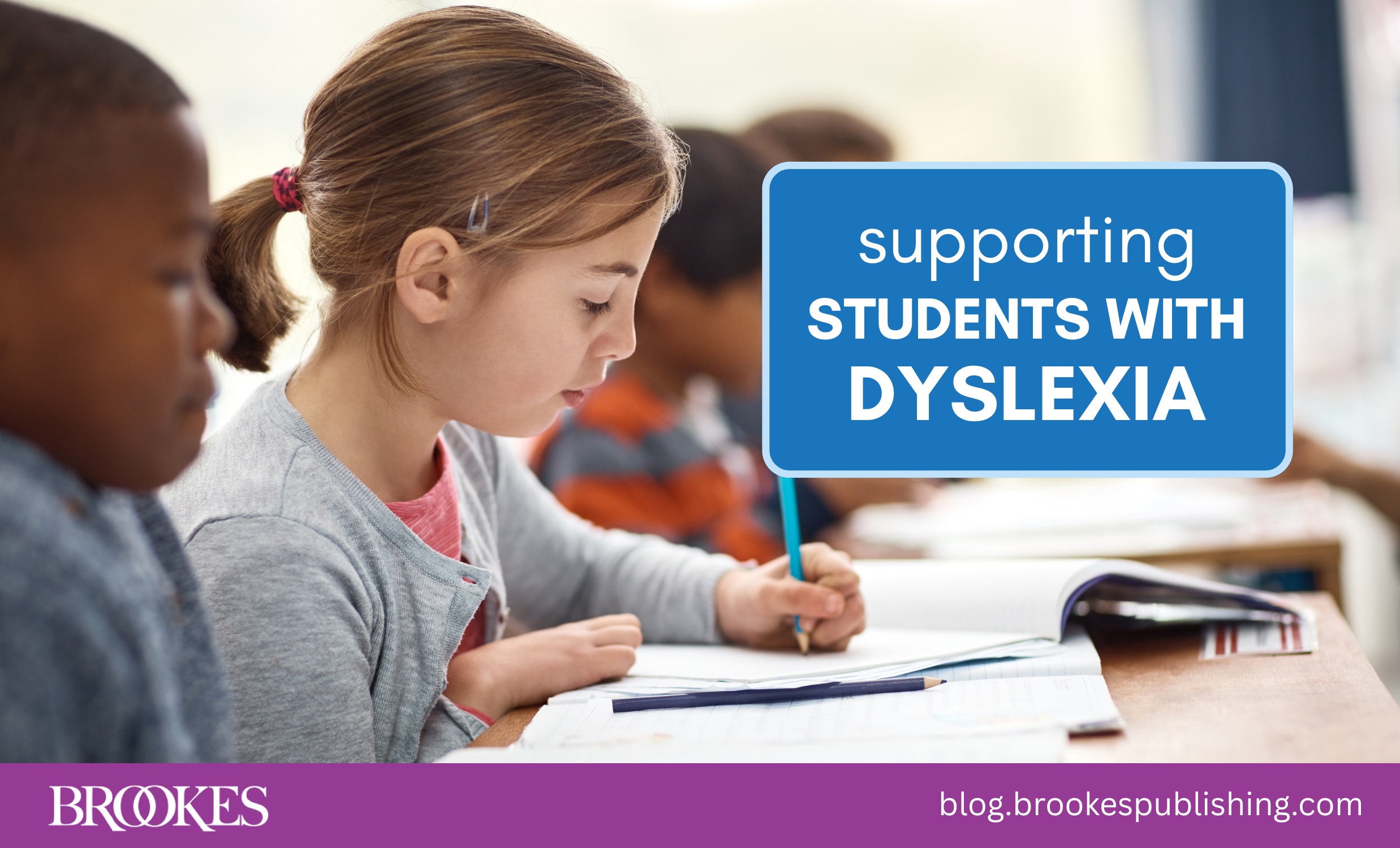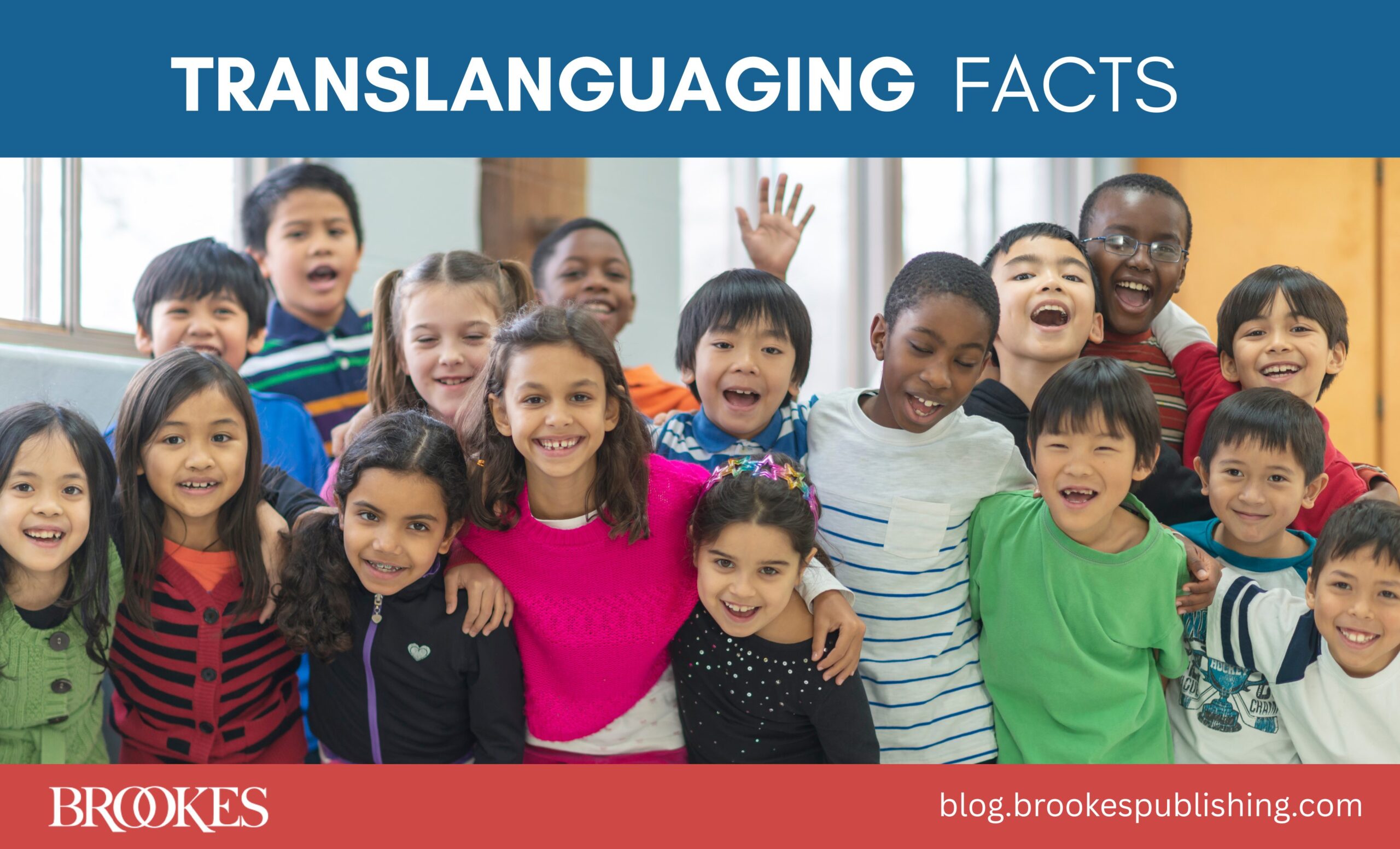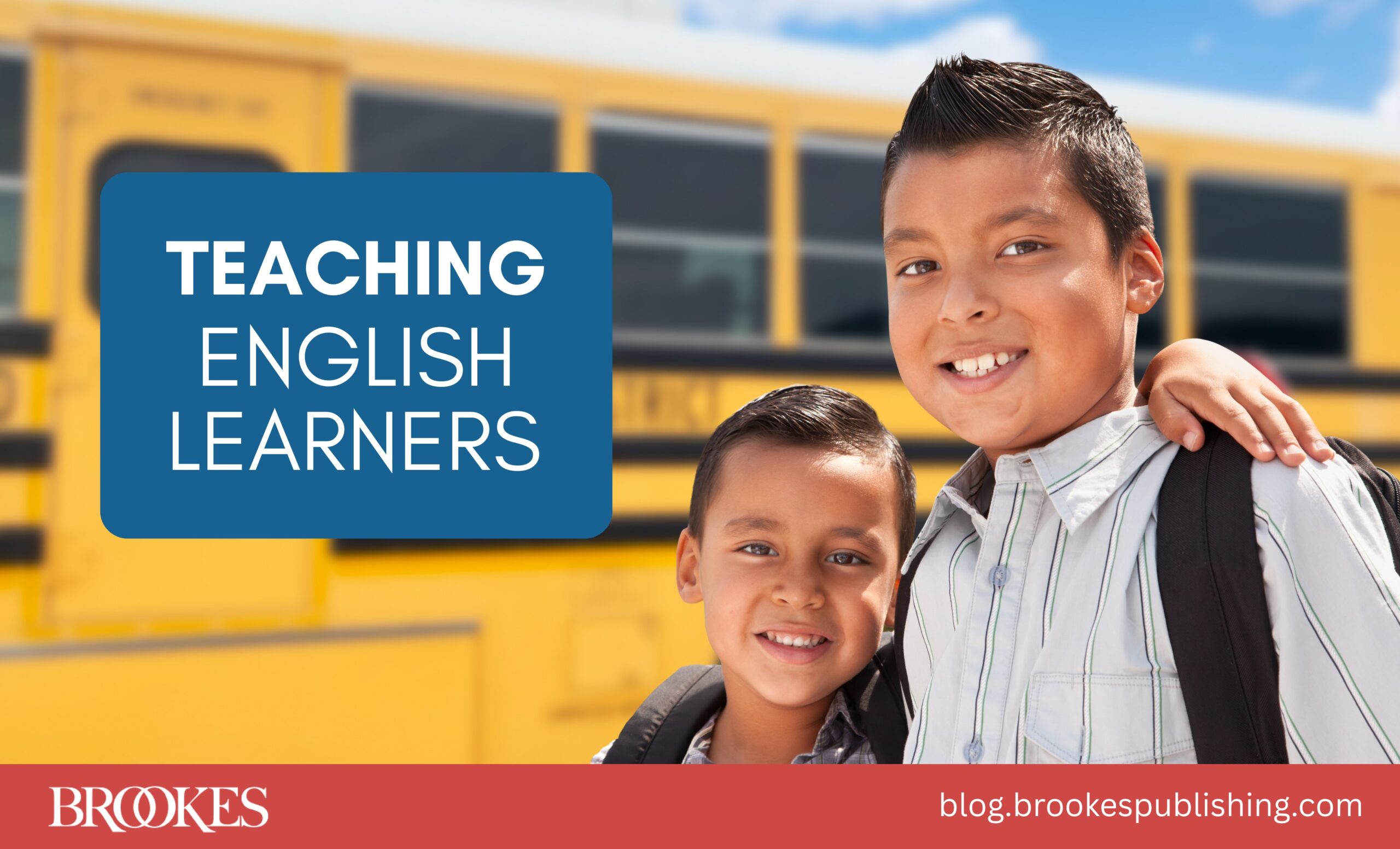Language Intervention for Preschoolers with Disabilities: Tom’s Story
March 3, 2016
![]()
This post is part of our Language & Literacy Development blog series. Stay tuned for more!
Today’s post is for our early-education readers, especially inclusive educators looking for simple strategies that help students with disabilities improve their language skills. Excerpted and adapted from Early Literacy in Action by Betty H. Bunce, this detailed example introduces you to Tom, a preschooler with language delays. You’ll see how Tom’s teacher used simple prompts and modeling strategies to help him reach his language goals—and support better outcomes for Tom and his peers throughout the school day.
Tom’s Story
Three-year-old Tom speaks primarily in one-word utterances. Tom’s words are usually intelligible, and he appears to understand much of what is said to him. He’s shy when interacting with peers, preferring to watch rather than play with them. He usually pays attention to the teacher during group activities and responds nonverbally to adult directions.
After language assessment, Tom’s education team decided to help him work toward these long-term outcomes:
- Increase vocabulary knowledge
- Increase mean length of utterances
- Increase appropriate peer interactions
To help Tom increase vocabulary knowledge, length and complexity of utterances, and appropriate peer interactions, here are some examples of interventions his teacher implemented in the classroom during the day. These included both general language facilitation techniques as well as specific intervention techniques. Paraprofessionals and support professionals can model these techniques, too.
Arrival Time
As Tom plays with the blocks and farm animals, the teacher describes what Tom is doing. Verbal responses from Tom are invited but not required. The teacher uses a number of specific vocabulary words during the activities and invites opportunities for appropriate peer interactions. Tom’s teacher:
- Models talk: “You are building a fence. A big fence. The cows can’t get out. The cow is jumping. He is jumping over the fence. He’s on the ground now.”
- Introduces contrasts: “He’s not in the truck. He’s on the ground.”
- Encourages expansion: When Tom says, “Block,” the teacher says, “Big block,” “Two blocks,” “More blocks,” or “Blocks in tub,” depending on his meaning.
- Prompts peer initiations: “Ask Maya for a block. Say, ‘May I have a block, please?'”
Dramatic Play/ Center Time
Tom is pretending to be the veterinarian and is playing with a toy doctor kit. His teacher plays along, targeting a number of specific vocabulary words and grammatical morphemes (on,” “in,” and “-ing”). As they play, Tom’s teacher:
- Models talk: “My doggie’s sick. Give him a shot,” “Is my dog OK?” “Help my dog,” and “Thank you for helping my dog.”
- Encourages expansions: When Tom says simply, “Hurt,” his teachers, “Doggie is hurt.”
- Prompts peer initiations: “Go ask Bobby for a turn. Say, ‘May I have a turn, please?'”
- Asks open questions: The teacher asks, “Where can we go?” Tom says, “Vet.” His teacher acknowledges and expands his answer: “OK, we’ll go to the vet. We’re driving to the vet.”
- Redirects: When Tom says, “Want car,” his teacher gently redirects him to a peer and models politeness: “Ask Charlie, “Car, please.'”
Art
Tom is decorating a colorful bag for Valentine cards—a great opportunity for more interactions and talk. His teacher:
- Models talk: “The paper is red or pink,” “You’re cutting out the heart,” “You’re pasting,” and “You’re putting it on the bag now.”
- Encourages expansions: When Tom says, “Cut,” his teacher expands this with, “Cutting the paper.”
- Prompts peer initiations: When Tom needs glue, his teachers says, “Ask Tyson. Say, ‘More glue, please.'”
- Asks open questions: “What color do you want?” Tom’s teacher asks. When he points one out, his teacher models a response: “You want red.”
Storytime
Storytime gives the teacher a chance to expand language skills for the whole class and target Tom’s specific goals at the same time. She:
- Selects books that label objects, as a way to present new vocabulary.
- Chooses stories with repetitive lines to teach language structure, help children predict future events, and encourage them to join in.
- Uses dialogue from the story to help Tom produce or practice new sentence structures:
Teacher: Teddy bear, teddy bear, what do you see? I see Tom looking at me.
Tom: Look me.
Sharing Time
Sharing time teaches children new vocabulary words and helps them learn how to ask and answer questions. As a child shows the class something brought from home, Tom’s teacher prompts another child to ask three routine questions about the item (“What do you have?” “What do you do with it?” and “Where did you get it?”). The teacher encourages Tom to participate in asking questions and initiating interactions with his peers.
Transition Times
Tom’s teacher uses transition times as language-learning opportunities for the whole class while targeting Tom’s goals. When the children are getting ready to go outside, the teacher:
- Asks questions like “Who is ready?” This encourages children in line with their coats on to respond with “I am” or “He is.”
- Provides labels for clothing items or body parts while kids are getting ready: “Put your hand in the mitten,” “Let’s zip up your coat,” “You need your hat to cover your ears.”
- Pays special attention to teaching Tom new vocabulary words and grammatical forms (e.g., hand in the mitten).
Outside Time
Outside activities give Tom’s teacher many opportunities to model, expand, prompt, and redirect verbal productions. As the children play, she:
- Teaches a variety of verbs (e.g., run, jump, skip, ride, slide, dig, climb, build) and prepositions (e.g., in, through, on, down, under, on top of, in front of, behind).
- Models talk by varying the complexity of the language she uses: “Mary is sliding down the slide” and “Suzie is riding the bike on the road” versus “Climb ladder” and “Dig in sand.”
- Prompts peer initiations: When Tom wants a turn on the bike, his teacher says, “Tell Joe, “˜My turn, please,'” to help him negotiate.
Snack Time
Snack time is about more than juice and crackers. It’s also an activity packed with language-learning opportunities. As the children enjoy their snack, Tom’s teacher:
- Models polite talk: “Please pass the juice,” “May I have more crackers, please?”
- Prompts peer initiations. When Tom indicates he wants more juice, his teacher says, “Why don’t you ask Suzie to pass the juice.” She models “Suzie, please pass the juice” if Tom declines to ask.
- Redirects: When Tom says, “I need more,” Tom’s teacher redirects with, “Ask Kayla to hand you the crackers.” Tom responds with “More, please.”
- Lets children sit by their special friends to encourage them to talk to each other.
Group Time
During group time, the teacher introduces new vocabulary and concepts to the whole class through lessons that involve matching, labeling, classification, and sequencing. Tom’s teacher:
- Targets Tom’s vocabulary goals. In Tom’s case, his targeted vocabulary includes the location term “in.” So Tom’s teacher asks him to identify the item that’s in the box (versus beside or under the box).
- Models appropriate vocabulary and structure.
- Prompts and expands initiations and responses from Tom and his peers.
- Asks open questions to help all children learn to problem-solve or to focus on a specific feature. For example, the teacher asks, “How can we find out how many ribs Smiley the Skeleton has?” One child responds by saying, “Count them.” The teacher has the child help count the ribs.
Music Time
Music time is an opportunity for kids to have fun together as they learn words through songs and rhythm activities. To make the most of music time, Tom’s teacher:
- Picks songs that are short and repetitive so all children can easily learn them.
- Has Tom start out by imitating the different animal sounds as the class learns “Old MacDonald Had a Farm.” He’ll work his way up to singing the whole song with the class.
- Chooses songs and fingerplays that could help expand Tom’s vocabulary knowledge. (Many songs use a variety of action words and labels—for instance, “Going on a Bear Hunt” discusses crossing a bridge, swimming in a river, climbing a cliff, and so on.)
***
These simple strategies and techniques illustrate how children with speech and language impairments can receive interventions within a day of typical preschool activities. When teachers provide a language-rich environment with many opportunities for both child-to-child and adult-to-child talk, children like Tom can make progress toward their goals—and all learners will benefit, too!




Write a Comment
Your email address will not be published. Required fields are marked *
Post a Comment